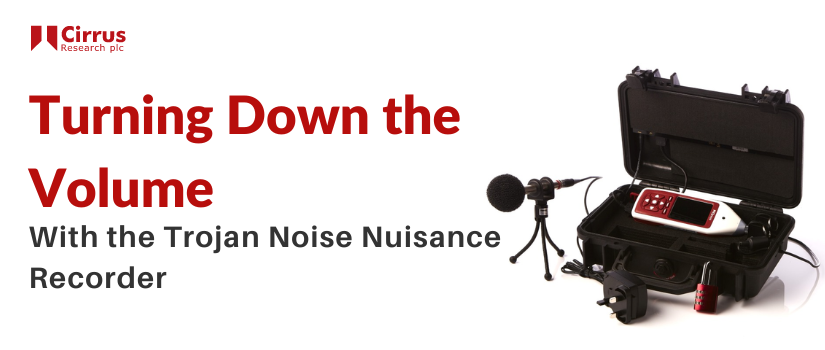For more than 50 years, we’ve been in the business of helping organisations across the world meet their legal and moral obligations to minimise the health effects of noise vibration on their employees. Noise and vibration pose very significant risks to people at work, especially if they’re not adequately protected with quiet/smooth tools or the correct level of personal protective equipment.
But what are the risks associated with exposure to excessive noise and vibration levels? What impact can noise and vibration have on people’s health?
The health effects of noise and vibration
Physical health effects of noise
From conditions such as acoustic shock (caused by severe one-off instances of extremely loud noise) to tinnitus (which can be caused by long-term exposure to excessive noise levels), there is a whole range of health conditions that are related to noise, each varying in severity and cause, but most of which can be easily avoided.
Noise-induced hearing loss (NIHL) refers to conditions that result in a loss of hearing caused by exposure to dangerous noise levels. The inner workings of our ears are incredibly sensitive and delicate and are prone to damage if not treated carefully. All noise is caused by vibrations in the air that are picked up by tiny hairs in our ear canal, which then travel to our inner ear. Typically, the louder the sound, the larger the vibration. Larger vibrations cause damage to the sensitive components of our ears, which is why loud noises are often uncomfortable and, in some cases, painful. Burst eardrums and conditions like acoustic shock are incredibly painful and can cause lasting damage to someone’s hearing, not only affecting their ability to carry out everyday activities but also their overall quality of life.
Conditions such as tinnitus and hyperacusis are more prolonged in their development and are caused by constant and prolonged exposure to excessive noise levels, which is a real and present danger for those working in environments that rely on loud machinery. But it isn’t just damaging to our hearing. There is a whole body of research that points to a link between hearing damage and other physical health conditions, such as cardiovascular disease, hypertension, stroke and heart attack.
Our physical health is at risk from exposure to excessive noise levels. But our mental health can also fall victim to noise.
Noise and mental health
Mental health awareness has grown considerably in the last few years. As such, there has been a significant amount of research conducted that highlights a relationship between excessive noise exposure and mental health conditions such as anxiety and depression. There is also a growing body of research that points to a link between hearing loss and Alzheimer’s disease and dementia.
A study conducted in 2009 found that the likelihood of a person developing poor mental health increased by 5% with every incremental drop in hearing for adults under age 70. Research conducted in 2019 showed that for older adults, that number increased to around one in five.
A 2020 study conducted by Hearing Link, a UK-based charity, showed that of those who participated:
- 89% cited social and personal problems as a key impact of hearing loss
- 58% said that their relationships had suffered
- 39% claimed that their conversations had declined or were harder to follow
- 75% had concerns about buying a hearing aid
- 35% struggled to be out with friends in public places
- 30% found watching TV difficult
Mental and physical health ailments are scary, especially when you consider that their potential cause is completely avoidable. If employers follow the Control of Noise at Work Regulations and take the necessary steps to control and reduce noise levels in the workplace, then the risk of developing the conditions we have discussed, is greatly reduced.
Physical health effects of vibration
For tree surgeons and arborists, the health risks associated with the job are numerous. We have already highlighted the dangers presented by excessive noise exposure, but vibration also presents its own set of dangers, specifically hand-arm vibration syndrome (HAVS).
HAVS is a condition usually caused by excessive vibration levels from handheld power tools and machinery used in the workplace. A painful, disabling, and irreversible condition, HAVS affects blood vessels, nerves, and joints, which over time, can prevent people from carrying out normal everyday tasks. In more serious cases of HAVS, it causes permanent disability; in extreme cases, it requires the amputation of affected areas. HAVS can affect your hand, wrist and arm and all the parts they’re made up of. It usually develops over time, becoming more severe the longer and more sustained the exposure is.
HAVS also includes other conditions caused exposure to excessive vibration levels, including Reynaud’s syndrome/vibration white finger.
Reynaud’s syndrome or vibration white finger is a condition that causes the extremities of fingers to turn white and in some cases, lose sensation. It can be caused from the use of vibrating power tools, which damages nerves and blood vessels, reducing blood flow, tactile sensation, and dexterity in the fingers.
Other conditions caused by excessive vibration levels include bursitis and carpal tunnel syndrome (CTS). Bursitis is the inflammation and swelling of bursa, which are fluid-filled sacs that form under the skin, acting as cushions between tendons and bones. Carpal tunnel syndrome is caused by the compression of the median nerve as it travels through the wrist at the carpal tunnel; it is similar to repetitive strain injury (RSI).
In extreme cases, these conditions can end people’s careers, especially in the tree surgery and arboriculture industry. Without full function of one’s hands and/or fingers, it can become impossible to operate the tools necessary to safely and effectively carry out the work needed.
Vibration and mental health
Although vibration exposure itself hasn’t been shown to cause poor mental health directly, living with the physical conditions it does cause can certainly lead to feelings of anxiety, isolation and depression. As discussed, the physical ailments linked to excessive vibration exposure can be incredibly debilitating and lifelong, affecting people’s ability to carry out everyday activities, including work.
According to the UK’s Health & Safety Executive, in 2019, there were 205 new cases of HAVS and 135 new cases of carpal tunnel syndrome. That’s 340 new cases of people’s lives that have been negatively affected by vibration at work. 340 cases that could have potentially been avoided by taking the necessary steps to measure and control excessive vibration.
The health effects of noise and vibration are clear and present a real danger to the health and well-being of those who work in environments where they are consistently exposed without the right level of protection. Thankfully, there is equipment available to measure and monitor noise and vibration levels, as well as a host of regulations that businesses must follow to ensure that their people are fully protected.



